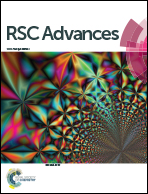Macroporous and nanometre scale fibrous PLA and PLA–HA composite scaffolds fabricated by a bio safe strategy
Abstract
The present study deals with the design, fabrication and characterization of porous scaffolds for tissue engineering made of polylactic acid (PLA) and PLA containing hydroxyapatite (HA) nanoparticles. The main novelty relies on the fact that the fabrication of the scaffolds has been achieved avoiding totally the use of toxic chemicals. In particular, the scaffolds are obtained by combining both thermal induced phase separation (TIPS) using ethyl lactate (EL) solutions and supercritical CO2 (scCO2) drying processes. Furthermore, gelatin particles have been used as a leachable porogen and combined with the previous processes to improve the control of the pore structure features of the scaffolds. The results show that the developed technique allows for the fabrication of porous PLA scaffolds with HA concentrations up to 30 wt%. Furthermore, these scaffolds are characterized by an overall porosity as high as 98% and a double scale pore structure. In particular, the appropriate control of the TIPS process and the scCO2 drying allowed for the development of nanoscale fibrous PLA and PLA–HA structures starting from PLA/EL solutions. Concomitantly, the proper selection of the size range of gelatin particles as well as their spatial distribution in the mixture allowed imprinting an interconnected network of large pores inside the scaffolds.


 Please wait while we load your content...
Please wait while we load your content...